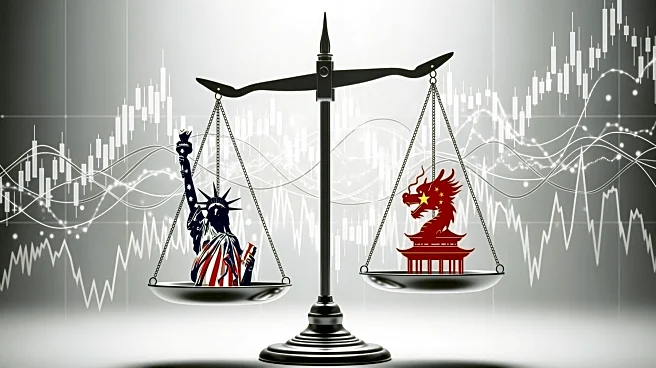What's Happening?
U.S. soybean farmers are facing economic challenges due to the ongoing trade war with China, which has halted American soybean exports to the Chinese market. President Trump has discussed providing aid
to farmers but has not yet implemented a bailout. The situation has led to decreased crop prices and increased farm bankruptcies. Farmers are urging for a trade agreement with China to restore access to the market, as China's purchase of soybeans from Argentina further undercuts U.S. farmers. The trade tensions have broader implications for U.S. agriculture and economic stability.
Why It's Important?
The trade dispute with China has significant implications for U.S. agriculture, particularly soybean farmers who rely heavily on exports to China. The lack of a trade agreement has led to financial strain and uncertainty in the farming community. A resolution could stabilize prices and restore market access, benefiting farmers and the broader agricultural industry. The situation also highlights the geopolitical complexities of trade negotiations and the impact of tariffs on international relations.
What's Next?
President Trump is expected to meet with Chinese leader Xi Jinping to discuss trade issues, including soybeans. The timing is critical as South American farmers begin planting their crops, potentially increasing competition for U.S. farmers. A trade agreement could provide relief and stabilize the market, but ongoing tensions and new tariffs threaten to escalate the situation. The outcome of the meeting may influence future trade policies and economic relations between the U.S. and China.
Beyond the Headlines
The trade war with China raises questions about the long-term sustainability of U.S. agricultural exports and the impact of geopolitical tensions on global food security. The situation underscores the need for strategic trade policies that balance economic interests with international relations. The challenges faced by soybean farmers reflect broader issues in the agricultural sector, including market volatility and the need for diversification.











